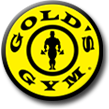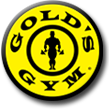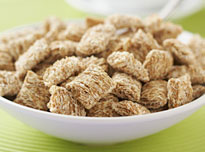11 Ways to Pick Out Healthy Food
Terapkan tips-tips ahli belanja dari health.com ini untuk memilih 11 versi sehat dari minuman, makanan, dan cemilan sehari-hari Anda.
Makanan Siap Saji yang Sehat
Ini adalah umpan biasa. Anda berjalan di lorong supermarket dan dibombardir dengan tulisan “alami” dan “meningkatkan imunitas tubuh” di tiap box, kemasan, dan botol.
Dengan banyaknya label menggiurkan seperti itu, bagaimana Anda membedakan mana makanan yang benar-benar sehat dan yang bisa jadi ‘mimpi buruk’ bagi nutrisi Anda?


SEREAL SARAPAN PAGI
Umumnya sereal memiliki porsi tiap sajian dan kalori yang sama tetapi berbeda kandungan serat dan gulanya, kata Keri Gans, R.D., juru bicara American Dietetic Association.
Belilah yang mengandung paling tidak 5 gram serat dan kurang dari 12 gram gula per sajiannya. Kandungan gula yang baik bagi tubuh Anda di dalam sereal adalah yang berasal dari buah-buahan kering, dan bukan dari sirup jagung tinggi fruktosa, molases, atau madu, kata Gans.
Secara umum, yang mengandung lebih sedikit bahan baku adalah yang lebih baik (contohnya sereal gandum parut –gambar atas- biasanya hanya mengandung gandum saja). Takar asupan sodium Anda agar paling banyak hanya mendekati 5% dari batas asupan sodium harian sesuai usia Anda, dan jangan konsumsi lebih dari 20% di sereal sarapan Anda.

ROTI
Cari roti yang mengandung tidak lebih dari 100 kalori dan 150 miligram sodium tiap lembarnya, dan pakling tidak 3 gram serat (yang berarti Anda harus melupakan roti tawar putih biasa).
Dan tak semua roti gandum itu sehat. “Hanya karena labelnya bilang –mungkin- mengandung tepung gandum utuh, bukan berarti komposisinya adalah 100% gandum utuh,” kata Gans. Lebih baik, carilah roti yang berlabel “100% biji-bijian utuh.”
Dan penting juga membaca daftar komposisi. Gandum utuh, oat, atau biji-bijian utuh harus menjadi bahan baku utama, dan hindari tepung yang diproses (refined flours). Jika tepung gandung utuh berada pada urutan pertama di daftar komposisi, maka roti tersebut akan rendah serat. Batasi juga molases dan bahan pemanis lainnya.
CEMILAN SEHAT (SNACK BAR)
Perhatikan kandungan protein, kalori, lemak, gula, dan serat pada cemilan praktis ini. Cemilan sehat yang ideal memiliki paling tidak 5 gram protein dan 3 gram serat, kurang dari 10 gram gula, serta kurang dari 200 kalori, jika memang makanan tersebut adalah cemilan.
Jika merupakan hidangan, boleh saja mengandung 300 kalori, kata Gans, dan 8 hingga 10 gram protein boleh saja, tetapi 20 gram mungkin agak berlebihan. Batasi konsumsi lemak Anda, yaitu sekitar 10 gram lemak totak, dan tidak lebih dari 1 gram lemak jenuh, jangan lupa cek dari mana asal lemak tersebut. “Kacang-kacangan adalah sumber lemak terbaik di cemilan sehat,” kata Gans.

MAKANAN BEKU
Bahkan pilihan yang rendah kalori dapat mengandung lebih dari 30% batas konsumsi sodium harian Anda. “Anda harus membandingkan tiap merk, karena umumnya makanan beku akan memiliki lebih banyak garam dari yang seharusnya,” kata Gans. “Cari yang mengandung persentasi terkecil dari kebutuhan harian Anda.”
Kandungan lemak dan kalori juga merupakan masalah khusus dari makanan beku. Hal ini karena makanan beku bisa mengandung lemak tak jenuh dari minyak zaitun dan salmon tapi juga lemak jenuh dari krim atau mentega. Pilih juga yang kurang dari 500 kalori. Dan karena ini merupakan hidangan, pastikan Anda mengkonsumsi paling tidak 10 gram protein per sajiannya.
Ingat, Anda mungkin tak akan mendapatkan asupan sayuran yang cukup dari makanan beku, jadi jangan lupa makan salad juga sebagai pendampingnya.
SAYURAN BEKU
Jika Anda tak punya sayuran segar –mungkin karena tak sempat belanja-, sayuran beku bisa jadi pilihan. Namun begitu, pilih produk yang hanya berupa sayuran saja, tanpa saus. “Saya jamin, jika dibuat dengan bahan lainnya, biasanya pasti mengandung krim atau saus keju, dan lebih baik Anda membuatnya sendiri,” kata Gans.
Jika Anda ingin sayurannya lebih enak, taburi saja sedikit keju Parmesan. Satu sajian setengah mangkuk brokoli dengan saus keju mengandung 90 kalori, 3 gram lemak jenuh, dan lebih dari 20% batas sodium harian Anda, sedangkan brokoli kukus dengan satu sendok makan keju parmesan dalam porsi yang sama hanya mengandung 37 kalori, 2 gram lemak dan sekitar 5% batas konsumsi sodium harian Anda.
SUP
Tetaplah berada di bawah 20% batas konsumsi sodium harian Anda (sekitar 460 mg jika batas konsumsi harian Anda adalah 2,300 mg, atau 300 mg jika batas konsumsi Anda 1,500 mg). Beberapa perusahaan membuat sup rendah sodium (dalam kemasan, bubuk atau kalengan) yang masuk kategori ini.
Kalori harus dibatasi sekitar 200 per sajiannya kecuali jika sup tersebut menggantikan porsi makan Anda, yang mana Anda boleh mengkonsumsi hingga 400 kalori.
Dan periksa juga porsi sajian. Satu kaleng sup biasanya adalah untuk dua sajian, dan jika Anda makan satu kaleng sup tersebut sendirian maka Anda bisa melampaui batas konsumsi sodium Anda.
Protein juga merupakan nilai tambah, sekaleng sup bisa jadi cemilan yang sehat atau bagian dari keseluruhan hidangan jika sup tersebut mengandung antara 5 hingga 10 gram protein. Namun jika sup tersebut adalah hidangan utamanya, pastikan sup tersebut mengandung paling tidak 10 gram protein.
NASI DAN PASTA
Pilih nasi dan pasta yang tinggi serat, lebih baik lagi pasta yang terbuat dari 100% biji-bijian utuh. Nasi coklat (beras pecah kulit) mengandung lebih sedikit serat, tapi lebih banyak daripada nasi putih.
Idealnya, Anda mengkonsumsi 7 gram serat per sajiannya (dan 25 hingga 35 gram per harinya), tetapi sebelum Anda melahap semangkuk rigatoni, cek porsi sajiannya. Pasta akan mengembang saat dimasak, jadi 1 ons pasta mentah mengandung lebih banyak serat –dan juga kalori- daripada 1 ons pasta matang. Jika tak dijelaskan di labelnya, perkirakan saja porsi sajiannya adalah untuk pasta matang.
Dan untuk beras dalam kemasan/dengan tambahan rasa, cek kadar garamnya juga. Biasanya mengandung banyak –kadang lebih dari 1,000 mg sodium pada merk tertentu.
SAUS SALAD
Hampir semua porsi sajian saus salad adalah dua sendok makan, sehingga sebenarnya mudah jika ingin melakukan perbandingan, kata Gans. Batasi hingga 50 kalori saja per sajiannya, dan lebih baik lagi jika kandungan gulanya sedikit.
"Pada dasanya gula apapun yang terkandung di saus salad adalah gula tambahan,” kata Gans. Pilih saus salad yang terbuat dari minyak zaitun, seperti vinaigrette, daripada yang terbuat dari mayones, seperti ranch dressing atau saus Thousand Island.
Dan lagi-lagi, perhatikan kandungan sodiumnya. Semakin banyak makanan olahan yang Anda makan, maka semakin banyak pula garam yang Anda konsumsi.
YOGURT
Yogurt bisa jadi pilihan rendah kalori untuk mengkonsumsi protein dan kalsium, tetapi jika salah pilih, Anda bisa makan seliter yogurt dengan kandungan nutrisi yang sama dengan es krim.
Pilih jenis rendah lemak, dengan paling tidak 6 gram protein. Yogurt Yunani memiliki kandungan protein yang lebih banyak per porsi sajiannyam dibandingkan dengan yogurt tawar biasa, tetapi yogurt Yunani berlemak tinggi bisa mengandung hingga 18 gram lemak jenuh.
Jangan lupa juga cek kandungan gulanya. "Seringkali yogurt justru mengandung gula yang lebih banyak,” kata Gans. Pilih yang mengandung kurang dari 20 gam gula per sajiannya. Pilih yang mengandung kadar gula antara 6 hingga 12 gram, seperti yogurt tawar, lalu tambahkan buah yang manis.
Kabar baiknya adalah, yogurt memiliki kadar sodium yang rendah.
MINUMAN OLAHRAGA
Kecuali Anda melakukan latihan ketahanan lebih dari satu jam lamanya, Anda tak perlu menkonsumsi minuman olahraga. Berhati-hatilah jika Anda akhirnya meminum minuman olahraga, artinya Anda bisa saja mengkonsumsi lebih dari 60 kalori per sajiannya.
Jika Anda berkeringat banyak dan butuh penyegaran, minumlah yang mengandung di bawah 60 kalori per sajiannya dan pastikan Anda tahu berapa porsi sajiannya (tiap botol biasanya untuk 2 porsi sajian).
"Banyak minuman olahraga yang sebenarnya hanya air bergula, dan Anda mengkonsumsi lebih banyak kalori yang sebenarnya tak Anda butuhkan,” jelas A lot of them are just sugared water, and you’re getting extra calories, which you don’t need," Gans. Walaupun minuman olahraga bagus saat berolahraga, pilih air putih jika Anda hanya merasa haus di hari yang panas.
CEMILAN ASIN
Rasa asin memang digemari para tukang ngemil, tapi pastikan Anda tak mengkonsumsi lebih dari 15% batas konsumsi sodium harian Anda, kata Gans.
Untuk tetap bisa ngemil dengan bijak, yang paling utama adalah cek porsi sajiannya. Cari tahu berapa banyak pretzel atau keripik untuk tiap porsi sajiannya. Nikmati cemilan dalam kemasan kecil ekonomis dan jangan makan lebih banyak.
Cari yang mengandung garam dan lemak paling sedikit per porsi sajiannya (pretzels biasanya memiliki lebih sedikit lemak daripada keripik kentang). Cemilan yang dipanggang lebih baik daripada yang digoreng, karena mengandung lebih sedikit lemak. Tetapi hati-hati, cemilan jenis ini justru mengandung lebih banyak garam sebagai kompensasi rasanya.
Gold's Gym Mall Ciputra | Gold's Gym Mall of Indonesia | Gold's Gym Thamrin City | Gold's Gym Cilandak Town Square | Gold's Gym Baywalk Mall Pluit | Gold's Gym Kalibata City Mall | Gold's Gym Braga Citywalk | Gold's Gym Cihampelas Walk | Gold's Gym Summarecon Mall Serpong | Gold's Gym Mall @ Alam Sutera | Gold's Gym Bintaro X-change | Gold's Gym The Breeze BSD | Gold's Gym Grand City Surabaya | Gold's Gym Surabaya Town Square | Gold's Gym Grand Metropolitan Bekasi





